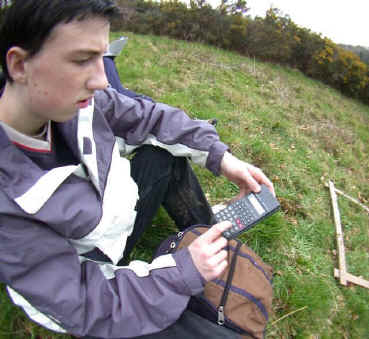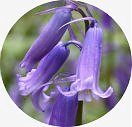|
| |
An Ecological Sampling Exercise
Processing & Interpreting Raw Data
Contents
Exercise using the Raw Data

| The raw data
forming the basis of this theoretical exercise was collected by students in a practical ecological sampling
exercise on the Heathland Restoration Project area, at the Woodland Education Centre,
Offwell. The exercise presented below was the follow-up exercise which the students
carried out to analyse their data. In order to answer some of the questions, students will need to visit
the Heathland Restoration Project
to access additional background information on the site.
Thanks are due to Dr
Wendy Graham and the Axe Valley Community College, for permission to
publish the raw data and follow-up exercise.
|
| Sections in blue are not part of the original
exercise set by Dr Graham for her students. They have been added to the exercise to
further test skills in extracting information from the data and interpreting it, as well
as in using statistical methods. They are optional. |
 Using the Data Using the Data
Enter the raw data onto a
spreadsheet. (Example of a
data spreadsheet from another project)
Work out the mean values for percentage cover of
Bluebells for each whole section, as well as separately for the top and bottom of each of
sections 2 - 4.
Is there a clear difference between the % Bluebell
cover in the top and bottom sections of strip numbers 2 - 4?
If there is a difference, how might this difference
be explained?
(Visit the Heathland Restoration Project for background information
to help you explain.)
Is the degree of difference between the top and
bottom of the strips the same in
each case for strips 2 - 4? If not, can you think of any explanations for this? |
. |
Is there any difference in the % Bluebell cover
between the spring and autumn brushcut strips?
How might any such difference be explained?
There are no Bluebells in strip 5 (the control strip)
now. What is going to happen to strip 5 if it is left totally unmanaged? (Visit lowland heath
if you need help with explaining this.)
The timing each year of the spring brushcut is not
exact. What effect might this have on the following year's Bluebells?
Are the strips / sections exact replicas of each
other? Does this matter?
This was a 'stratified' random sampling' exercise. Would
a belt transect (systematic sampling) have
given 'better' results?
|
Are there any factors other
than management which might influence the Bluebell distribution in the strips?
What prior data might help
you to interpret the results better?
Which value, the median or
the mean, do you think gives the best description of the mid point of the data sets? Give
your reasons.
What statistical test might
you use to determine whether any differences between the strips, as well as between the
top and bottom of the strips, were statistically significant? Explain your choice.
If you were to redo this
sampling exercise, how might you improve it?
If the climate in the
South-west of Britain becomes dryer and warmer as a result of Global Warming, what will
happen to the Bluebells in this area?
|
Note for Teachers
|

 Using the Data
Using the Data